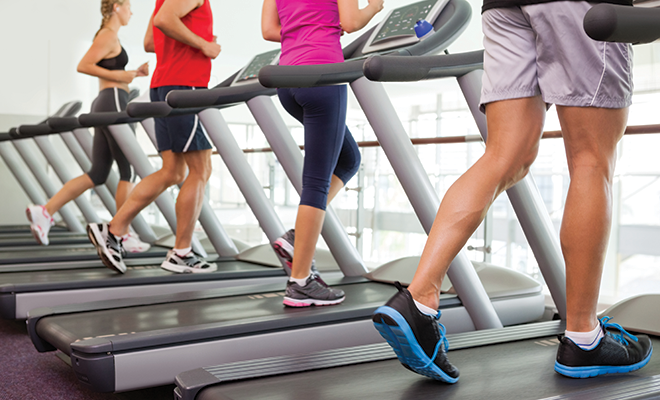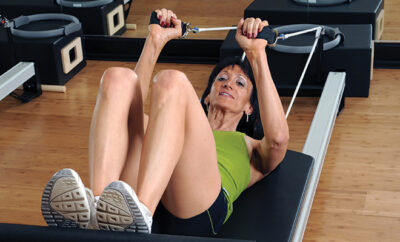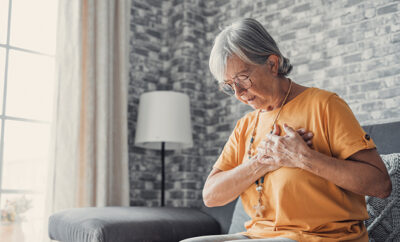
How NOT to Take a Tumble on the Treadmill and Other Gym-Safe Tips
You wouldn’t know it by the number of “funny” treadmill mishap videos featured on the internet, but these seemingly safe pieces of gym equipment can cause severe harm and even death to well-intentioned exercisers. Falling on a treadmill or other fitness apparatus might get a few laughs, but emergency room visits are much more common.
You may recall this past summer when Dave Goldberg, CEO of SurveyMonkey and husband of Facebook COO Sheryl Sandberg, died after he fell on a treadmill during a family vacation. He suffered traumatic brain injury and hypovolemic shock, a condition brought on by severe blood and fluid loss.
Another tragic and highly publicized accident occurred in 2009. Mike Tyson’s four-year-old daughter was discovered by her older brother hanging from the emergency cord coming from the family’s treadmill. Apparently, the cord became locked around her neck and choked the little girl to death.
Although these types of accidents are rare, broken bones, torn ligaments and bruises are not. Last year, approximately 24,000 people visited emergency rooms because of treadmill mishaps, and that doesn’t count the accidents stemming from stair climbers, ellipticals and weight machines.
What’s more alarming is that each year about 8,700 children under five years of age are injured by exercise equipment, and another 16,500 injuries are reported in kids ages 5 to 14. The most notorious accidents occur on stationary bikes, treadmills and stair climbers.
While we would love to furnish our gym with the latest elliptical and a flat screen TV, safety matters most. So before you drop big bucks on Bose speakers, take a moment to follow a few easy tips to keep you and your family safe.
What’s Up, Doc?
Just because you lettered in high hurdles during high school doesn’t mean that 20 years later you can make a quick comeback. It is a good idea to start slowly and visit your doctor before starting any exercise program, especially if you are sedentary or over 40.
Get to Know Your Gear
Before you purchase a piece of equipment, ply your salesperson for as much safety information as possible. Read the instruction manual thoroughly before using the equipment, and check out other buyers’ reviews on consumer websites. If you work out at your local gym, ask the employees to show you how to operate the equipment. Don’t be embarrassed; that is their job.
Familiarize Your Family
Treadmills seem to be the biggest culprit when it comes to injuries. The American College of Sports Medicine suggests getting to know your treadmill. Before you get on it, experiment with the controls and go over safety features. Speed it up, slow it down, increase and decrease the incline and test the emergency off button or safety key.
Safety Is “Key”
All newer treadmills have a safety key that clips onto clothing and turns the treadmill off if the runner falls. The machines also can’t be started without the key, so keep the cord out of reach of children when the machine is not in use. Never wrap the safety key’s cord around the handle. This could prevent it from working when you really need it.
Safety Stance
Even if you are only slightly slumping while exercising, you can lose your balance instead of losing fat. On most equipment, standing with shoulders back, head up, chin lifted and abdominals tight is a great starting point for proper posture.
Look forward, not down at your feet, and keep your stride relaxed.
On treadmills, pay attention to where you are on the belt. Stay in the center and don’t drift to one side or, worse, fall off the back.
On ellipticals and stair machines, don’t stick your rear out, and never lean your upper body on the equipment. Leaning puts too much strain on your arms and shoulders while leaving your lower body out of the hard work.
Keep the Kids Away
Children should be kept out of the gym at all times, unless they are being supervised by an adult WHO IS NOT WORKING OUT. If someone is exercising, they can’t see what is going on behind them or in the corner. Unplug electric-powered machines when not in use. If you own equipment that folds for storage, keep it in the folded position until you are ready to run or walk.
Room Check
Any gym, whether public or private, should be in a large enough space to hold all equipment without gear being kept on the floor. Use fitness-specific racks and shelves to store smaller items such as weights, bands and balls to avoid “dumb falls” over dumbbells.
Being able to exercise indoors is convenient and efficient, especially in cold weather. But be smart and play it safe. Good habits will keep you on top of your workout while steering you clear of the emergency room. HLM
Sources: acsm.org and cnn.com.







